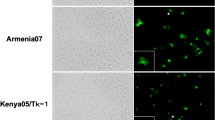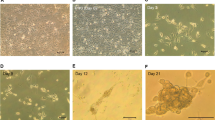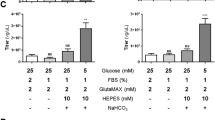Abstract
SOME common properties described for adenovirus strains are: (1) distinct intranuclear inclusion bodies in infected cells; (2) grape-like pattern of cytopathogenic effect; (3) group complement-fixing antigen; (4) uniform hexagonal ultrastructure; (5) a “relative species specific host range in animals and in tissue cultures” as described by Howe and Hartley1. Strains of human adenoviruses induced disease in the natural host or in closely related genera, and the titres of virus were higher in human cells. Human adenoviruses have been propagated in non-human tissues: Betts et al.2 demonstrated infection in pathogen-free piglets with human adenovirus, Type 1; and the oncogenic effect of human adenovirus 12 and 18 was demonstrated by Trentin et al.3 and by Huebner et al.4 in hamsters. In addition, human adenovirus has been propagated in tissues of various animals: Guerin and Guerin5 in pig kidneys; Rowe et al.6 in rabbit trachea and cotton rat tissues; Kelly and Pereira7 in rabbit kidneys; and Warren and Cutchins8 in bovine and embryonic tissue culture. In regard to propagation of animal adenoviruses it has been stated by Ginsberg9 that “adenovirus of animal origin propagates best and initiates distinctive cyto-pathology in tissues from homologous species”, and in another report Rowe and Hartley1 stated that mouse and chicken adenoviruses were quite species-specific in pathogenicity for animals and tissue cultures.
This is a preview of subscription content, access via your institution
Access options
Subscribe to this journal
Receive 51 print issues and online access
$199.00 per year
only $3.90 per issue
Buy this article
- Purchase on Springer Link
- Instant access to full article PDF
Prices may be subject to local taxes which are calculated during checkout
Similar content being viewed by others
References
Rowe, W. P., and Hartley, J. W., Ann. N.Y. Acad. Sci., 101, 466 (1962).
Betts, A. O., Jennings, A. R., Lamont, P. H., and Page, A., Nature, 193, 45 (1962).
Trentin, J. J., Yabe, Y., and Taytor, G., Science, 137, 835 (1962).
Huebner, R. J., Rowe, W. P., and Lane, W. T., Proc. U.S. Nat. Acad. Sci., 48, 2051 (1962).
Guerin, L. F., and Guerin, M. M., Proc. Soc. Exp. Biol. and Med., 96, 322 (1957).
Rowe, W. P., Huebner, R. J., Hartley, J. W., Ward, T. G., and Parrott, R. H., Amer. J. Hyg., 61, 197 (1955).
Kelly, B., and Pereira, H. G., Brit. J. Exp. Path., 38, 396 (1957).
Warren, J., and Cutchins, E. C., Virology, 4, 297 (1957).
Ginsberg, H. S., Virology, 18, 312 (1962).
Hartley, J. W., and Rowe, W. P., Virology, 11, 645 (1960).
Pollard, M., and Starr, T. J., Prog. Med. Virol., 4, 54 (1962).
Weiss, E., and Huang, J. S., J. Infect. Dis., 94, 107 (1954).
Tanami, Y., Pollard, M., Starr, T. J., and Moore, R. W., Texas Rep. Biol. and Med., 18, 515 (1960).
Hammon, W. McD., Yohn, D. S., Casto, B. C., and Atchison, R. W., J. Nat. Cancer Inst., 31, 329 (1963).
Author information
Authors and Affiliations
Rights and permissions
About this article
Cite this article
SHARON, N., POLLARD, M. Propagation of Mouse Adenovirus on Cell Lines of Human Origin. Nature 202, 1139–1140 (1964). https://doi.org/10.1038/2021139a0
Issue Date:
DOI: https://doi.org/10.1038/2021139a0
This article is cited by
-
A sensitive plaque assay for influenza virus A2 Japan in chick embryo fibroblast cultures
Archiv f�r die gesamte Virusforschung (1966)
Comments
By submitting a comment you agree to abide by our Terms and Community Guidelines. If you find something abusive or that does not comply with our terms or guidelines please flag it as inappropriate.



